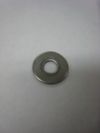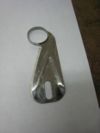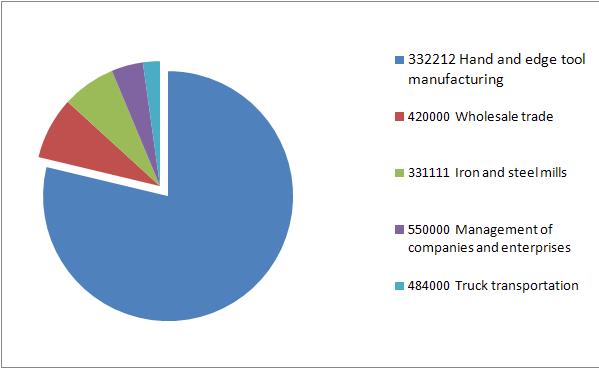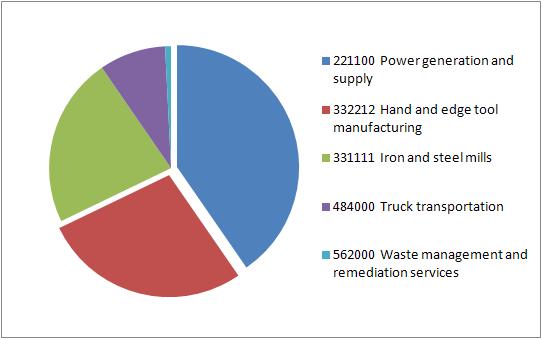Apple peeler
From DDL Wiki
Contents |
Executive Summary
Customer Needs
The primary customer need in an Apple Peeler is to have the ability to easily and quickly remove the skin of an apple. It is also expected that the device can peel the skin off various types of fruits and vegetables of similar shape and size. Since this is an everyday kitchen ware, the first and foremost requirement for this product is ease of use and safety. If must be easy enough so that the device can be operated from common sense without instruction by people of different age groups. It must be safe to be used by small children and elders, both male and female. Customers should not have to worry about possible safety hazards caused by everyday equipment.
Stakeholders
Consumers
- The consumers are the primary stakeholders of the product. The “consumer” maybe anyone from any age group of any gender since it is an everyday kitchen ware.
- Product must be relatively cheap to purchase since the function of the product is limited as opposed to a table knife.
- Safety must be considered in detail to prevent any type of injuries.
- Design will need to accommodate various users with different sizes and strength.
- Operation of the product must be intuitive to be carried out without instruction.
- Product must efficiently and quickly skin the apple.
- Product must be able to skin apples of all sizes and shapes.
Retailers
- Retailers are concerned with how the product presents itself at their stores.
- Product must be compact as possible for efficient storage.
- Product must be of manageable weight to be handled easily at stores.
- Product must be durable enough to stay intact even when handled poorly or dropped.
- Product should be aesthetically pleasing or should be able to be made aesthetically pleasing to attract customers.
Manufacturers
- Manufacturers are concerned with ease manufacturing.
- Product should have low part count.
- Parts used should be easily accessible. This may mean that the parts have already been manufactured for other products.
- Material used in manufacturing the parts should be cheap and easily accessible.
- Assembly process should be simple, quick and easy to reduce production speed and labor costs.
Shipping/Transport
- The primary concern in shipping is to deliver product received by manufacturer to retailers in a timely manner without any variation in product quality.
- Product must be easy to handle. This may be done by reducing weight and choosing appropriate shape of the product so that when the product is boxed it is easy to handle.
- Product must be durable so that any external load applied during shipping does not affect the quality of the product.
System Function
The Apple Peeler can have the following functions:
- 1. Peel an apple
- a. The corer/slicer is removed and handle is turned.
- 2. Peel, core and slice and apple
- a. In addition to the peeling process above, the apple is cored and sliced in a spiral.
- 3. Core and slice and apple
- a. Same function as above but without peeling the apple.
- 4. Suction cup fixes the base to the table top
- a. The lever activates the suction cup which applies a downward force on the product, giving the user support when peeling the apple.
To operate the device, the following steps are followed.
- 1. Place the device on a smooth surface, making sure there is no irregularity on the surface or dust which may reduce the effectiveness of the suction cup.
- 2. Turn the suction cup lever to activate the suction cup. Check that the device is securely attached to the surface.
- 3. Pull the handle away from the device as much as possible to allow enough space for the apple to be placed within the device.
- 4. Secure the apple in the device by pushing the bottom of the apple into the tri-fork.
- 5. Depending on the functions the user wish to perform, follow one of the following;
- a. Function 1:
- i. If the corer/slicer is attached, remove it by loosening the butterfly nut.
- ii. Place the peeler blade to come in contact with the apple surface.
- b. Function 2:
- i. If the corer/slicer is not attached, attach it by tightening the butterfly nut.
- ii. Place the peeler blade to come in contact with the apple surface.
- c. Function 3:
- i. If the corer/slicer is not attached, attach it by tightening the butterfly nut.
- ii. Move the peeler blade away from the apple surface until the peeler handle stopper clicks into place.
- a. Function 1:
- 6. Make sure the channel stopper is on the groove of the grooved channel.
- 7. Turn the handle away from the body until sufficient result is achieved according to the user.
- 8. Removed the apple from the device.
- 9. Remove the core from the tri-fork by slowly reversing the direction of the turn.
Usability
Handle
- Handle screw becomes loose after several runs.
Suction cup
- Suction cup lever should be on the other/both side.
- Strength of suction is not enough to support the peeling process. User is required to hold the base even when the suction cup is activated.
Peeler
- Uneven apple surface causes the peeler to miss the part of the skin, leaving some areas unpeeled.
- The blade will wear after time, and there are no replacement blades. This means the customers are forced to buy a new product when the blade becomes dull.
Corer/Slicer
- Friction from nut and bolt is the only support of the corer/slicer and therefore this nut and bolt is very tight. :*Sufficient strength was needed even with adult male.
- Slicing and coring are performed by the same part. Both functions must be performed at the same time.
- The nut which hold the slicer is very close to the blade and may cause injury when trying to remove nut.
- Adjustment of the corer/slicer requires the use of screw driver, which is too time consuming when more than one apple are peeled in different ways.
- The blade back/front is not clear and therefore user may attach the corer/slicer in the wrong orientation.
Tri-fork
- Apple placement requires strength.
- Apple core is hard to remove after coring and causes the core to shoot off the tri-fork.
General
- The peeled skin made a mess on the kitchen table and product.
- Troublesome to re-place the groove locker after each peel.
- The adjustments are done by screwing and unscrewing nuts and bolts, which is very troublesome.
- The nuts keep the majority of the parts intact, and therefore very tight and hard to remove.
- There is no replacement for the nuts. Consumer may try to remove the slicer blade and if a nut is lost during this process, the peeler is no longer functional.
- The apple must be placed in the correct orientation, or it will not peel and also potentially break the product.
- The peeling process must be done in one continuous run. Once stopped, the peeler may not peel some areas of the apple.
- The size of the peeled object cannot exceed the specification. The product has very little robustness.
- The product is very hard to clean after covered in apple skin and juice.
Product Assembly
List of Parts
Assembly Diagrams
| Assembly | |
|---|---|
|
Design for Manufaturing and Assembly
DFMA is a set of guidelines that allows engineers and designer to reduce the complexity and cost of manufacture of a product.
Apple Peeler DFM
The apple peeler exhibits good DFMA, it is simple and functional with few parts. When examining and dissecting our products, we divided the product into 6 major components: the corer/slicer, the peeler, the grooved channel, the main body, the base, and the vacuum sticker. First of all, the corer/slicer is made of stainless steel and is made through stamping stock into the desired shape. The design of the corer/slicer is developed so that the appropriate size of the core can be extruded while the apple goes through. The u-shaped peeler is also made of stainless steel and is made by stamping. The peeler handle is connected to a spring so that it can adjust the peeler into the best position with appropriate force exerting on the apple. Moreover, the grooved channel is made of stainless steel and is made by extrusion. The tri-fork that holds the apple is connected to the very front of the grooved channel. As we spin the handle, the tri-fork would gradually rotate and move toward the blade. The main body and the base are both made of steel and are made by molding. The last component is the vacuum sticker. The vacuum sticker is made of rubber and is made by injection molding. One thing should be pointed out here is that the vacuum rubber case contains a hard rubber plate with 9 equally space holes. They did surface treating on the rubber case so that the surface is smooth, the apple peeler can thus effectively stay firmly. Furthermore, the peeler handle, the main body, and the base would be painted. Since these three parts are made of steel, painting is a necessary operation to prevent steel from rusting.
Apple Peeler DFA
The way the apple peeler is assembled is by pre-manufactured fasteners, which increases the ease of assembly. The fasteners used in this design, however, have different thread size on different parts, which would increase the difficulty of assembly. The apple peeler actually includes 30 components. Even though we only mentioned about five main parts here, the actual manufacturing process is indeed long and time consuming due to the large numbers of components assembly. For the future design, reducing the trivial components would definitely be one of our goals.
DFE
Economic Activity
The data shows every additional $1 million dollar stimulate a total of $2.43 million in all sectors combined.
Wholesale Trade gains 0.131 million, and Iron & Steel Mills gains 0.085 million economic flux. Considering apple peeler is a low tech product,
it is most made of metal or steel, so Iron & Steel Mills comes third. More investments are going into distributing and resell the product.
Greenhouse gas pollution
From the EIO-LCA table, we see for every $1 million into the household cooking appliance manufacturing, 711 metric tons of CO2 greenhouse gas is emitted.
Most of the increased greenhouse gas comes as the result of power generation and supply, and iron/steel mill production.
Apple peeler is used by itself only, without any supplementary product. Typical apple peeler cost range from $10 ~ 30, average $20.
It shows us that 0.01422 MTCO2E is produced for each apple peeler.
FMEA
| Part Number | Item & Function | Failure Mode | Effects of Failure | S | Causes of Failure | O | Design Controls | D | RPN | Recommended Actions | Responsibility & Deadline | Actions Taken | S | O | D | RPN |
|---|---|---|---|---|---|---|---|---|---|---|---|---|---|---|---|---|
| 3 | Corer/slicer blade | Blunt, bending | Operation impaired | 7 | Extended use | 7 | Durability test | 1 | 49 | Better material | Materials Engineer | - | - | - | - | - |
| 5 | U-shape peeler | Blunt | Operation impaired | 7 | Extended use | 7 | Durability test | 1 | 49 | Better material | Materials Engineer | - | - | - | - | - |
| 8 | Peeler handle stopper | Deformed | Not able to disable peeler | 5 | Fatigue | 4 | Durability test | 2 | 40 | Reinforcement, thicker metal | Mechanical Engineer | - | - | - | - | - |
| 11 | Coil (peeler handle) | Loosened | Not able to peel | 8 | Extended use | 4 | Lifetime test | 6 | 192 | Alternative solutions | Mechanical Engineer | - | - | - | - | - |
| 12 | Peeler handle | Deformed | Operation impaired | 7 | Fatigue | 2 | Lifetime test | 2 | 28 | Reinforcement | Mechanical Engineer | - | - | - | - | - |
| 13 | Grooved channel | Cracked groove | Rough operation | 7 | Wear | 3 | Fleet test | 3 | 63 | Better material | Materials Engineer | - | - | - | - | - |
| 14 | Tri-fork | Deformed, loosened | Unstable operation | 6 | Excessive force from user, fatigue | 5 | Fleet test | 4 | 120 | Redesign structure | Mechanical Engineer | - | - | - | - | - |
| 16 | Wooden handle | Cracked | Rough operation, might injure user | 5 | Wear, corrosion | 5 | Lifetime test | 3 | 75 | Better material | Materials Engineer | - | - | - | - | - |
| 17 | Handle lever | Deformed | Erratic operation | 2 | Fatigue | 2 | Durability test | 3 | 12 | Reinforcement | Mechanical Engineer | - | - | - | - | - |
| 18 | Plastic ring | Cracked | Unstable operation | 4 | Wear | 3 | Durability test | 7 | 84 | Better material | Materials Engineer | - | - | - | - | - |
| 19 | Channel stopper | Deformed | Operation impaired | 7 | Wear, fatigue | 4 | Lifetime test | 5 | 140 | Reinforcement, thicker metal | Mechanical Engineer, Materials Engineer | - | - | - | - | - |
| 20 | Coil (channel stopper) | Loosened | Operation impaired | 7 | Wear | 4 | Lifetime test | 6 | 168 | Alternative solutions | Mechanical Engineer | - | - | - | - | - |
| 21 | Channel stopper rivet | Cracked, loosened | Unstable operation | 5 | Wear, fatigue | 2 | Fleet test | 7 | 70 | Alternative solutions | Mechanical Engineer | - | - | - | - | - |
| 22 - 26 | Vacuum | Failure | Vacuum inoperative | 7 | Wear | 6 | Fleet test | 4 | 168 | Better design | Mechanical Engineer | - | - | - | - | - |
| 27 | Base case | Deformed | Poor appearance | 3 | Fatigue | 3 | Durability test | 2 | 18 | Reinforcement | Mechanical Engineer | - | - | - | - | - |
| 30 | Main body | Deformed | Unstable operation | 4 | Fatigue | 2 | Durability test | 2 | 16 | Reinforcement | Mechanical Engineer | - | - | - | - | - |
| 1, 2, 4, 6, 7, 9, 10, 15, 28, 29 | Butterfly nuts, washers, screws | Loosened, threads stripped | Rough, unstable | 3 | Wear | 4 | Lifetime test | 7 | 84 | Better material, alternative solutions | Materials Engineer, Materials Engineer | - | - | - | - | - |
































